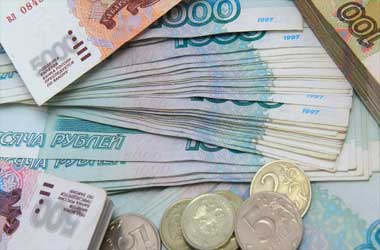 The Russian ruble fell 1% to trade at 72.30 against the greenback today, mirroring the weakest exchange rate since May 19, as investors anticipate monetary policymakers at the US Fed meeting to reaffirm its dovish stance.
The Russian ruble fell 1% to trade at 72.30 against the greenback today, mirroring the weakest exchange rate since May 19, as investors anticipate monetary policymakers at the US Fed meeting to reaffirm its dovish stance.
A week before, the central bank of Russia slashed benchmark interest rate by 25 basis points to a fresh historical low of 4.25%. The ruble has been declining against the greenback since June as investors stood worried about worldwide economic rebound, partial recovery in crude prices and decline in sales of overseas currency by the ministry of finance.
It can be remembered that the Bank of Russia slashed the benchmark interest rate (one-week repo) by 25 basis points to 4.25% last week, citing stabilization of inflation outlook, following a decline in May-June period. The fourth rate of 2020 was announced to bring the economy back on growth track after it got severely hit by Covid-19 pandemic.
Policymakers trust that the rebound will be only incremental and there is a risk of seeing inflation drifting downwards from the 4% target next year. The central bank also stated that yearly inflation will likely hit between 3.7% and 4.2% in 2020, 3.5% and 4% in 2021 and will remain near 4% from then on.
Government officials are also willing to look at further benchmark rate cut in the forthcoming meetings.
Brent crude futures lost most of its early gains to trade at about $43.30 per barrel, as worries about increasing Covid-19 instances eclipsed expectations of further stimulus from key economies.
WTI futures were trading at roughly $41.50 a barrel. As per Johns Hopkins University, the infection figures is nearing 16.50 million, pouring cold water on crude oil demand outlook.
From China to Germany, India and Spain, infections continue to increase sharply. In the meanwhile, the US Senate, led by Republicans, have tabled a $1 trillion monetary assistance package, which will be discussed with the Democrats.
Norway’s retail trade rose 5.7% m-o-m in June, following a 2.8% growth in May and a 4.8% surge in April. Notably, a breakdown of data indicates that consumers in the last few months have radically altered their consumption pattern, with less preference to services and more to staples.
Furthermore, the closure of border with Sweden implies that Norwegians will find it hard to source goods that are usually procured at economical cost across borders.
Grocery stores, as mentioned above, recorded positive growth, a pattern seen across the globe, and is at historical high levels.
Likewise, clothing shops also contributed considerably to overall growth following a steep drop in sales at the beginning of the pandemic.
Gas stations and shoe shops also led the overall retail sales growth. On y-o-y basis, retail sales surged 13.7%, the highest on record.
Notably, household goods consumption rose 5.3% m-o-m in June, following a 4% growth recorded in the earlier month. It is the highest increase in personal spending since April 2003, against the backdrop of relaxation of Covid-19 sparked lockdown initiatives.
Spending on food, tobacco, and beverages rose 4.3% in June, compared with 1.7% in May. Likewise vehicle and fuel sales grew 11% in June, after increasing 3.2% in the earlier month.
On the contrary, spending on power and heating fuels decreased 6.5%, after increasing 5.6% in May.
The country’s industrial confidence indicator improved to -10.1 in 2Q20 from an amended -17.40 in the earlier period.
Nevertheless, industrial sentiment stood in negative zone, as output, aggregate fresh orders and job opportunities decreased due to the negative effect of the Covid-19 pandemic.
The Q3 economic outlook remained weak as measures taken to limit the spread of Covid-19 continue to affect the economic growth. Capital and intermediate goods producers continue to have a bearish view of the economy.
Businesses have postponed investment plans and fresh orders from both the local and export market are anticipated to decline steeply. A similar scenario exists in job market, with manufacturing sector anticipated to fall sharply in 3Q20.




